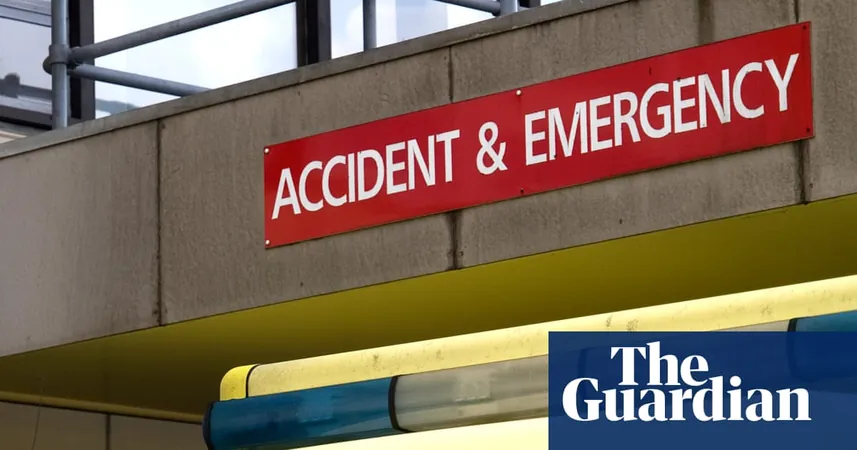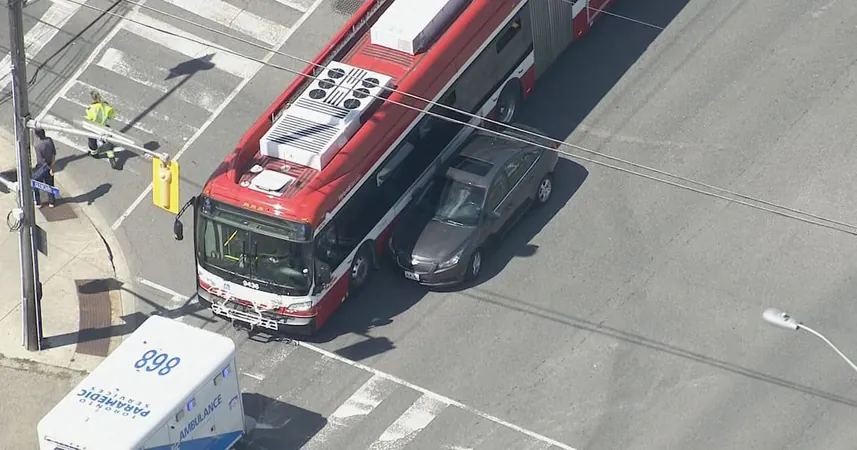
Revolutionary AI Tool Set to Transform Stroke Recovery in England
2025-09-01
Author: Charlotte
AI Innovation Promises to Triple Stroke Recovery Rates
In a groundbreaking advancement for stroke treatment, half of all stroke patients in England are expected to see significant recovery improvements thanks to a state-of-the-art AI scanning tool. This innovative technology is on track to drastically reduce serious disabilities resulting from strokes.
Every stroke center throughout England is now equipped with this life-saving AI software, designed to quickly assist doctors in determining whether emergency surgery is necessary. With the capability to analyze brain CT scans in just one minute, this technology identifies the type and severity of a stroke and suggests the most effective treatment.
Quicker Diagnosis Means Better Outcomes
This incredible tool is not just a time-saver; it’s a game-changer. By shortening the crucial time between a patient’s arrival at the hospital and the start of their treatment—from 140 minutes to just 79 minutes—the AI system is set to dramatically enhance recovery outcomes. In initial NHS trials, the number of stroke patients recovering with little to no disabilities soared from 16% to an astonishing 48%!
Now rolled out across all 107 stroke centers, this revolutionary tool could positively impact the approximately 80,000 individuals who experience strokes in England each year. The announcement came during the European Society of Cardiology congress in Madrid, underscoring the global significance of this advancement.
Expert Insights on AI’s Life-Saving Potential
David Hargroves, the NHS national clinical director for stroke, shared his enthusiasm for this cutting-edge technology, stating: 'This AI decision support technology is revolutionizing how we help people who have been affected by a stroke.' He emphasized the urgent need for swift diagnosis and treatment, as a staggering 2 million brain cells can be lost every minute during a stroke.
The AI system eliminates the guesswork traditionally involved in interpreting brain scans. Its ability to identify patterns undetectable to the human eye significantly reduces the uncertainty and delays that often accompany stroke treatment.
Awareness of Environmental Risks
In related news, recent studies presented at the conference revealed intriguing insights into environmental factors affecting stroke risk. Research indicates that living near busy roads can elevate stroke risks, even amidst low pollution levels. Doctors advise homeowners to soundproof their windows or relocate to quieter surroundings to mitigate stress caused by constant traffic noise.
A comprehensive analysis of 26,723 Danish men aged 65 to 74 found that even a minor increase in traffic noise—like the difference between a quiet sidestreet and a bustling main road—can elevate stroke risk by 12.4%. Dr. Stephan Mayntz from Odense University Hospital highlighted the importance of addressing chronic noise pollution as part of broader public health strategies to reduce stroke incidence.
These findings not only reinforce the significance of rapid stroke intervention but also emphasize environmental health’s role in stroke prevention. As technology evolves, so does our understanding of how to combat this prevalent health issue.









 Brasil (PT)
Brasil (PT)
 Canada (EN)
Canada (EN)
 Chile (ES)
Chile (ES)
 Česko (CS)
Česko (CS)
 대한민국 (KO)
대한민국 (KO)
 España (ES)
España (ES)
 France (FR)
France (FR)
 Hong Kong (EN)
Hong Kong (EN)
 Italia (IT)
Italia (IT)
 日本 (JA)
日本 (JA)
 Magyarország (HU)
Magyarország (HU)
 Norge (NO)
Norge (NO)
 Polska (PL)
Polska (PL)
 Schweiz (DE)
Schweiz (DE)
 Singapore (EN)
Singapore (EN)
 Sverige (SV)
Sverige (SV)
 Suomi (FI)
Suomi (FI)
 Türkiye (TR)
Türkiye (TR)
 الإمارات العربية المتحدة (AR)
الإمارات العربية المتحدة (AR)